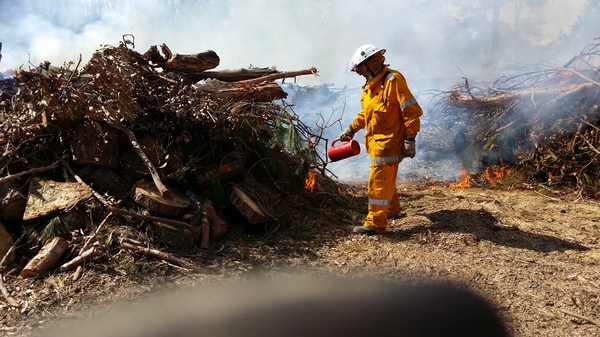By ANDREW BELL
WHAT has the local Doonan Rural Fire Brigade crew been up to? Well, over the last month we have had a few call outs to scrub fires, but in the main we have conducted and assisted at a number of Mitigation Burns.
What is a Mitigation Burn you may ask? Simply put, it is a planned burn which is used across Australia to reduce the risk of wildfire/bushfire and is conducted as a means to reduce fuel loads (in particular, grasses and dense undergrowth vegetation) prior to the peak vegetation growth period of spring and summer.
The burns can also be of ‘stacks’ of brush that have been felled and left to dry. These burns protect farm, grazing land and property from potential indirect adverse impacts as a result of any bushfires. Burns are well planned, controlled, and are only conducted by trained personnel. They are co-ordinated with Queensland Fire and Emergency Services, Queensland Police and local councils to share resources and ensure adequate risk mitigation. Additionally, by highlighting conservation and protection zones during planned burns, we can help improve biodiversity and the ecology for native flora and fauna.
Through the whole Natural History of Australia, ‘Fire’ has helped shape and form this place we call home.
Community safety is a primary concern when carrying out burns. Mitigation burning is a simple concept but it depends on complex number of factors that are not always predictable (such as wind changes, both in direction and speed); therefore there is always an element of risk associated when burning.
Each prescribed burn is heavily scrutinised and has to pass a rigorous approvals process before any burning can begin. These burns do not mean that there will never be large damaging bushfires, however, it does help to make them less likely and damaging.
During any planned burn, smoke may drift into residential areas or roads. It is up to the land owner, whether this be the local council, Parks Department or resident on the property to inform neighbours of the burn. Usually, for big local authority burns, this is in the form of announcements in the press, local radio or a letter drop to residents. If you are in the downwind area of a burn there are some simple rules to reduce the effects of smoke; avoid hanging washing out to dry during the burn period, stay indoors and close the windows and doors. If you have a health condition such as asthma, follow your doctor’s advice and always carry your medication with you, and maybe take the opportunity to visit a friend or relative close by.
All landholders have a responsibility to address fire management across their property. If you have hectares of dry grass, large timber stacks, areas of bush with a high fuel load (leaf litter, dead branches, and dry undergrowth) you should look to mitigating the risk of potential wild fires.
Simply put, if you own the fuel, you own the risk. If you are concerned about fire risks on your property, contact your local Fire Warden or the QLD Fire and Emergency Services direct to discuss the fire management plans on your property.







